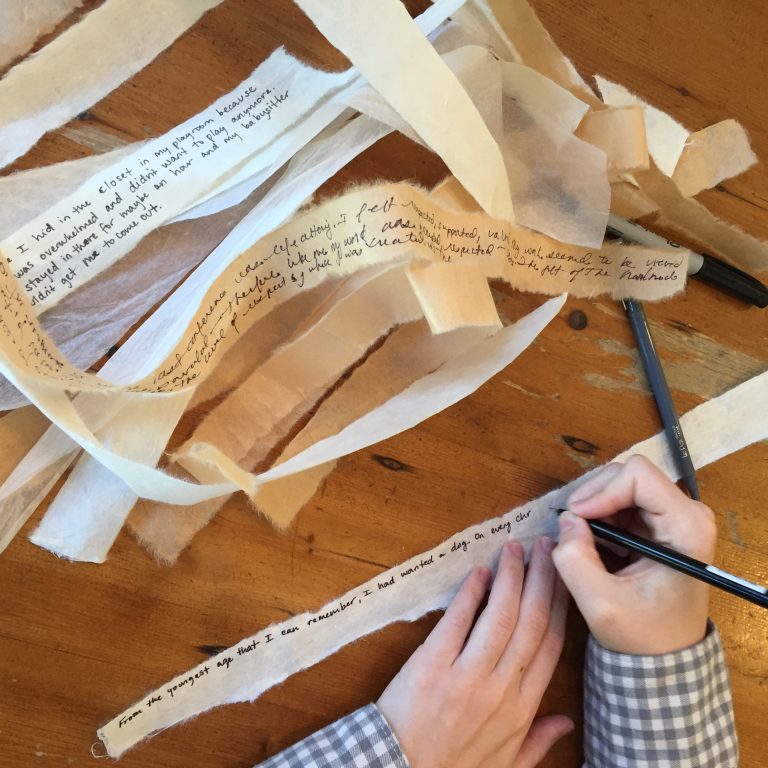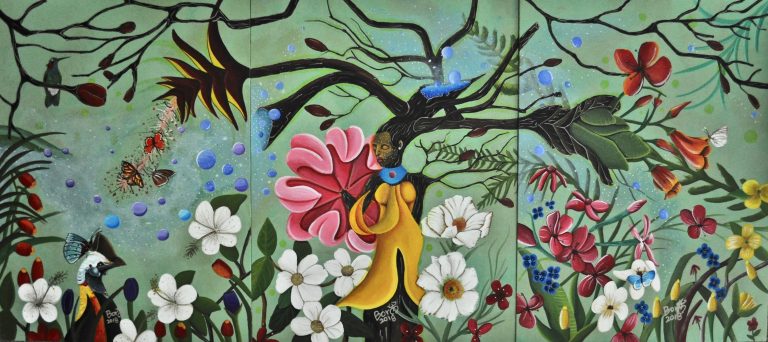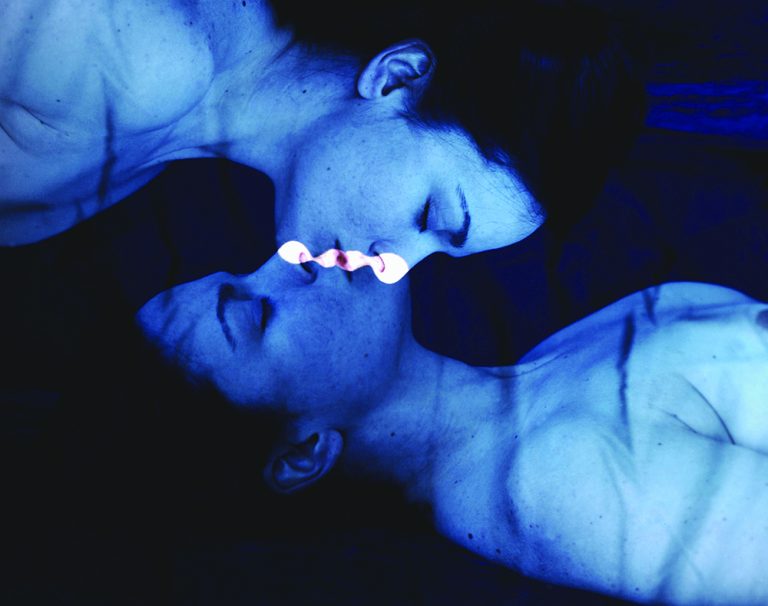The Art is the Process of Making the Image
Photography is as special a medium as music is. Can you tell me who your favorite band is? I can’t. There are just too many sounds and different styles that I love, and picking my favorite would be an impossible task. The same is true with photography. Ever since the 1840s, when photographic processes were improved and simplified, thereby making it affordable to the masses for the first time, photographers have used it to find their voices.
When I think of portraits, I think of Edward Curtis’s work with the Native Americans; reportage, I think of Mathew Brady’s Civil War images and W. Eugene Smith’s work in the Japanese fishing village of Minimata; for still life, I think of Irving Penn; and fashion, I think of Richard Avedon. We have the opportunity to enjoy the vastly different and unique visual experiences from whatever perspective the artist chooses.
The nine photographers in ArtsWestchester’s 2020 Lawrence Salley Photography Award online exhibition capture a wide range of subjects, perspectives and techniques. For instance, contrary to popular notion, digital photography has not made it easier to capture outstanding images. Yes, you can capture snapshots more easily, but the photographs in this exhibition are not just snapshots – there is effort, thought process, patience and discipline needed in order to capture something outstanding. Nor are the photographs in this exhibition all digital. Some of the artists represented in the show, such as Howard Goodman and Arnold Kastenbaum, who is this year’s Lawrence Salley Photography Award winner, are using the traditional capture and printing methods of film and darkrooms, which require a great deal of effort.
There isn’t much visual consistency among the nine exhibiting photographers, except that they are all working with a box that has a lens attached to it and are pointing it in the way their heart tells them to. For instance, the works of Kastenbaum, Goodman, and Joseph Squillante remind me of painters who happen to be working in the medium of photography, Tom Atwood’s work is as unique as his subjects, and John Verner has a strong sense of color and the street.
Point being, put nine photographers in a room with one subject to photograph and you will get nine distinctly different images. How can this be? We all see differently, even if we are not aware of it. From my own experiences, I get a sensation that is hard to describe whenever all of the elements that I look for come together in one moment. I look for the convergence of color, light, composition and timing. These are my gods. And they are shy and elusive. It takes a thousand hours of looking to find them. This is the discipline part of the medium of photography.
Like anything, professionals make this stuff look easy. But it ain’t. It takes a lot of drive, personal time, expense and just plain hard work to create images like the ones on view in this exhibition. And that is why it is so important to support these fine artists. They are doing this work without any kind of return guaranteed, and that takes a lot of guts.
There is one important thing to remember: the art isn’t just the final image. The art is the process of making the image. The photographer’s timing, planning, dedication and execution.
Backstage is not what you think. There are no cast parties after the show. It takes a tremendous effort to create a body of photographic work. The darkroom requires endless patience to remake a print that may not yet be what was envisioned, requiring a redo. Street photography comes with obstacles, such as crowds, traffic and police. You have to persevere. I have a singular focus when working; I only want to get the image I came for, and I will do anything to get it. I suspect that the artists represented in this show know all too well about this. They have done the hard work and have put themselves out there. Now we are the lucky ones who get to enjoy it.
A version of this article first appeared in the May issue of ArtsNews, ArtsWestchester’s monthly publication. ArtsNews is distributed throughout Westchester County. A digital copy is also available at artsw.org/artsnews.
More from As a Matter of Art Blog

About John Rizzo
John Rizzo’s photography has been featured numerous times on the cover of Newsweek, as well as on the covers of the Washington Post and the Los Angeles Times Sunday Magazines. He has produced large projects for commercial clients such as The New York Mercantile Exchange, Corning Inc., and Pfizer. His photographs have been published in The New York Times, Newsweek (US, Japan, China, Korea, Espanol), The Overseas Press Club, Bloomberg, The Los Angeles Times, The Washington Post, Fortune and Money Magazine. He has covered September 11, and stories on the Russians of Brighton Beach, the Maasai of Northern Tanzania, the Joplin Tornado, and many others. Recent portrait subjects include Judith Jamison (Artistic Director, Alvin Ailey), Paul Rabil (lacrosse player), Tommie Hilfiger (fashion designer), Delia Ephron (author), Julian Niccolini (Managing Partner, The Four Seasons Restaurant), Condola Rashad (actress), Senator Kirsten Gillibrand, James Naughton (director/actor), Rubin Singer (fashion designer), Shelly Tretter Lynch (Sotheby’s International Realty), Congressman Sean Patrick Maloney, Matt Lauer (The Today Show), Ruth Reichl (former editor-in-chief, Gourmet Magazine), Kathie Lee Gifford, and Katrina Adams (President of the United States Tennis Association). He is currently focusing on creating books and multimedia about culture worldwide. In addition to assignments, he is also teaching and leading photo tours in remote locations. “Much like how a musician feels about an instrument he has played thousands of times, being behind the camera feels perfectly natural to me and began with my college degree in photojournalism. I am passionate about bringing aspiring photographers of all ages and skill levels to exotic cultures to teach them both the art of capturing great images and the storytelling challenges of representing the culture in a respectful and true way.” He has covered assignments in Australia, Bolivia, Brazil, Cambodia, China, Ethiopia, Great Britain, India, Japan, Myanmar, Singapore, Sweden and Tanzania. “Photography is everywhere in today’s society, and much more so than at any other time in my life. This presents an opportunity to use it as a powerful educational tool. My sole vocation has been as a photographer, and I have worked in different areas of it, as a studio photographer doing conceptual work to illustrate stories using new technologies to create things that were never before possible, as a portrait photographer, and as a photojournalist covering financial news and feature stories. This gives me a unique palette of experience to draw from to pass on to the next generation of visual artists. People of all ages today are hungry to get control of their ability to make images and to express themselves. The Arts, including photography, are an important piece of the rich fabric of our society. My job is to teach them how to harness that power, to learn how to see, execute, and open the way for them to create their visual stories in both still images and video. My personal goals are to lead and teach in the field about cultures that are trying to maintain their way of life in the face of the tremendous pressures of encroaching western influences and diminishing resources.”
John Rizzo is an award winning photojournalist, portrait photographer and educator. He has produced large projects for commercial clients such as The New York Mercantile Exchange, Corning Inc., and Pfizer. His photographs have been published in The New York Times, Newsweek (US, Japan, China, Korea, Espanol), The Overseas Press Club, Bloomberg, The Los Angeles Times, The Washington Post, Fortune and Money Magazine. He has covered the events of September 11th, The Russians of Brighton Beach, The Maasai of Northern Tanzania, The Joplin Tornado, and many others. He is currently focusing on creating books and multimedia about culture worldwide, to preserve and educate about how things have been done for generations. In addition to assignments, he is also teaching while leading photo tours to some of these remote locations. “Much like a musician feels about an instrument he has played thousands of times, being behind the camera feels perfectly natural to me, and began with my college degree in photojournalism. I am passionate about bringing aspiring photographers of all ages and skill levels to exotic cultures to teach them both the art of capturing great images and the storytelling challenges of representing the culture in a respectful and true way.







